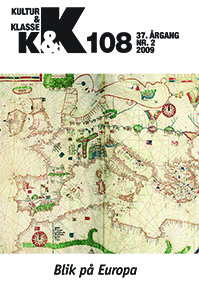Teorier om det tragiske: med særligt henblik på det moderne tragiske og med udblik til Blichers »Hosekræmmeren«
DOI:
https://doi.org/10.7146/kok.v37i108.22001Nøgleord:
Teori, tragisk, moderne, tragik, Blicher, HosekræmmerenResumé
Theories of the Tragic – with Special Reference to the Modern Tragic and with a View to »The Hosier and His Daughter« (»Hosekræmmeren«) by St. St. Blicher:
The term ‘tragic’ is often used in descriptions and analyses of modern (here: post-classical) literature. Yet, only rarely is this use sound and critically based. The purpose of the present article is to introduce the reader to the theory of the tragic – with a particular focus on possible definitions of the modern tragic.
In the article, three phases of theoretical history are identified: 1) a genre-based, normative-poetological phase (classic and classicism), 2) a philosophical phase (German idealism and post-idealism), and 3) a current, more pluralistic phase (crosscutting literary criticism, aesthetics, and the history of ideas). The article’s general approach to the theories is, however, systematic rather than historical. A Nietzschean and a Hegelian line are being sketched out and contrasted, the former as a metaphysically (vertical) and the latter as a historically (horizontal) oriented theory of tragedy. The third line in the theoretical history is that of psychoanalysis.
At the end of the article – using the short story »The Hosier and His Daughter« (»Hosekræmmeren«) by St. St. Blicher as an example – it is shown how the different approaches are able to throw light on a modern prose text. It is suggested that, having become a problematic genre with the breakdown of classicism, tragedy lives on as a modus within other genres, such as the short story and the novel.
Downloads
Publiceret
Citation/Eksport
Nummer
Sektion
Licens
Tidsskriftet følger dansk ophavsret.





